Purna Virji is one of those people you see on just about every list. She’s been named the most influential PPC expert of 2016, and is a regular keynote, sometimes at the conferences where I speak. I’ve seen her speak and she knows her stuff!
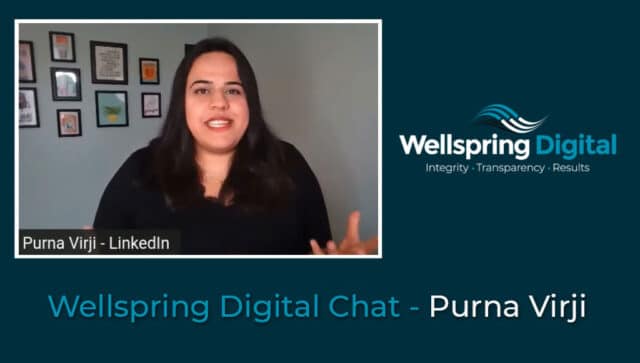
Of course, 2016 was about 20 lifetimes ago. Today Purna is the Senior Content Solutions Evangelist at Linked, which means she works with one of my all-time favorite people, Amber Naslund. We dive into her big brain to talk about PPC, SEO, and content marketing…
-
- Does Paid Help Organic?
- Common PPC Campaign Elements to Focus on
- Paid Campaigns on LinkedIn
- Knowing Your Audience
- Corporate Jargon: The Keyser Söze Bad Content
Let’s do this!
Digital Transcript (Edited for Readability)
Introductions
Purna Virji: I was saying how you are an absolute legend and plus people have been singing your praises to me and I have all this FOMO. I’m like, why do I not know Jon? Why is Jon not saying hello to me? It’s about this is finally happening. I’ve excited.
Jon-Mikel Bailey: Moral dilemma. Do I leave this in or cut this out? I don’t know. Let’s go to the intro… Hi, I’m Jon-Mikel Bailey, a legend in his own mind, and welcome to the Wellspring Digital Chat, where we stand by violently accost and sequester marketing experts. Minimal damage is done. We lightly torture them, and no, I’m just kidding.
We get deep inside their brains, and we extract all the good data, all the good stories, all good anecdotes, the good stuff that you as marketers need. And then we share it directly with you. I really need to shorten my intro as it’s becoming a problem. But anyway, so Purna is one of those people that you see on just about every list. In fact, when I was thinking, “who do I want to get next?” I was scrolling through some lists, and I was like, “oh, yeah, I’ve never talked to her. How is that possible?”
So here we are. She’s been named one of the most influential PPC experts of 2016. And is a regular keynote, sometimes at conferences where I speak, and I’ve actually seen her speak. And she knows her stuff. Of course, 2016 was about 20 lifetimes ago when all we worried about was what kind of President Hillary Clinton would be. Hmm. Anyway, Purna, please take a moment and let us know what you’re up to more recently.
Purna Virji: Awesome, Jon, thank you so much for having me here. And thank you for all for watching. So I think I’m just a nerd in a nutshell. So I love understanding what makes people tick. So you know, what can we do to convince them? What principles of persuasion have been used since the time of dinosaurs, and that’s the stuff that really really, I find fascinating.
And so I worked, of course in startups, but then I was at Microsoft for a long time for Microsoft advertising working in PPC. And I kept gravitating more so towards the strategies and the tactical of the product. Ad copy and content’s always been my passion, especially in our industry, Jon, we learned because other people share via articles, speaking, and so on, and I wanted to be able to give back to others.
And so I started writing a lot. And then I realized that content’s my true passion. And so a little over a year ago, I switched over to LinkedIn, which, you know, I’m still in the Microsoft universe. I always joke I drink the Kool-Aid like Satya Nadella. Like I love everything he stands for. And I didn’t want to go too far from home. And you know, how amazing is LinkedIn? Everyone loves LinkedIn so much, including myself.
I spend the most time on it in the day, really, not because I work here. And so that’s why I’m doing my job right now. I advise other companies on how they can grow their business by improving their content.
Jon-Mikel Bailey: And yes, you are at LinkedIn, which means you work with one of my all-time favorite people Amber Naslund. Your career has covered so many topics for this, but for this, I really want to pick your brain about PPC, SEO, and content marketing. So you ready?
Purna Virji: Ah, well, I’m nervous, but…
Jon-Mikel Bailey: You’ll be fine. I’m the one who should be nervous.
Does Paid Help Organic?
Jon-Mikel Bailey: Alright, so, I’m gonna start off, I’m gonna ask you one of the most asked PPC/SEO questions because it’s rarely answered, well, in my opinion, no pressure. You’ve done SEO and SEM, paid and organic as it were, can or does one influence the other? In other words, can paid influence organic? Does organic help paid?
Purna Virji: So, I can actually answer this question with data. There were loads of research studies that the team at Microsoft advertising did that showed that when you have paid and you have organic in the same sort, but actually leads to a net-net more overall clicks and conversions, then if you had one or the other alone.
So one plus one equals like four and not just two, when you have both. So yes, I mean, if we think about it, if we put our consumer hat back on and not our marketer hat, when you look at something, it’s just more chances of seeing something. You build a top of mind awareness, maybe I read an ad, scroll down, see the organic placement right there, click on it, it’s almost a billboard effect, right?
You may drive by the billboard, you don’t see it, but it’s there. So they do, there has been lots of data and research from people far more brilliant than myself who have gone in and shown that they can have a very cumulative effect.
Jon-Mikel Bailey: So I’m just to just to clarify. So I’m not suggesting and I don’t think you are either, that if you if you have a paid program with Google, that they will give you favorable SEO rankings. But I think that’s what you’re suggesting.
Purna Virji: Oh, 100% Yes. So internally, it’s always church and state, like they never should the twain mix. And so there’s no advantage there. The advantage is more from the consumer point of view when they see you more often in the SERPs.
So by being more present, and having this unified, cohesive brand across multiple touchpoint areas, that’s where you as a brand would benefit. Whether you’re doing consistent advertising from your TV to your social or TV to search, or, you know, paid and organic, they put some things there.
Jon-Mikel Bailey: It’s almost like, you know when you’re watching a TV show, and you see product placement, you know, it’s paid for, but it’s also sort of organic. Like, I could really go for Coca-Cola right now, this podcast is sponsored by the good people…
Common PPC Campaign Elements to Focus on
Jon-Mikel Bailey: So, continuing on with paid, we’re often asked to go in and review or audit existing paid accounts, Microsoft, Bing, or Google or even social accounts. And for some reason, we’re still surprised by the lack of effort that goes into setting these up. So I want to know, what do you think are some common campaign elements that are important, but marketers might miss and what are some common mistakes?
Purna Virji: I think it becomes the big question. Good question. And I agree because we pondered the same things ourselves. For five and a half years, I was able to go in and look at multiple different accounts and go in and see it. And of course, you hear as well, people complain, like, “I’m stuck, I don’t know what to do,” especially a mature account.
I think it all comes down to the very human nature to chase the silver bullet, the new, sexy thing, like maybe this is the one thing that’s gonna solve it. And oftentimes, the biggest wins can come from the foundational basics. You’d almost need to do advanced beginner-level settings.
And this is often the part that is the least sexy, it’s the least fun to do, having to go in and auditing your keywords, your negative list, or your targeting, your bid and budget, like all of the most basic core things that you do when you first set up the account. And then far too few people go back and visit them.
But there was this Microsoft search or you know, MSN is there, there are display ads, there’s this new type of audience that has come out, there’s this new responsive search. So all of this new stuff, it will chase that. But if your foundation is weak, then none of them will really work well. And some of it can be stakeholder pressure, too.
So even if you are working in an agency, for example, your clients getting emails or they’re reading, they’re browsing Search Engine Land, they’re watching Wellspring Digital Chats, they will be like, “oh, I’ve heard about this new thing. Why are you not doing it?” Are you doing it true, so it is, it’s very natural and all too common, but I would always say that, okay, find the sexy new silver bullet.
But go back and audit like if you’re going to spend an hour on something sexy, please go and spend two hours on something foundational and then you don’t have to do it often. But if you do it every six months or so, depending on the size of your account, of course, your mileage may vary. But that’s gonna set you up in much better stead.
Jon-Mikel Bailey: And sexy gets expensive.
Purna Virji: It does it gets really expensive if you don’t understand it super well if the environment and the targeting and the campaign and the keywords and everything weren’t even set up in the right way in the first place. Then it is far too easy to lose money.
Jon-Mikel Bailey: Which is astounding to me. And I’d love to have you weigh in on this. I don’t understand, and maybe it’s just me, but it seems like people will kind of set it and forget it with a paid campaign. And that that blows my mind because it’s pricey. And the whole point is to get a return on your investment. But I’m always amazed by how neglected these accounts are. I don’t know if you have a thought on why that might be or if people are just lazy.
Purna Virji: Oh, it’s not just lazy, I find that marketers in general, just have more things on our to-do list than there are hours in the day. And that’s just the nature of our jobs. Like it just gets more and more complicated. Everyone’s working with multiple platforms, there are multiple products, there’s multiple, like, you know, this audience targeting this keyword lead does display this reach out, there are so many options.
So I definitely am not criticizing any marketer right there. It’s not laziness, I think we can rule that out, for the most part, it is being overwhelmed. And plus the, you know, both Google and Microsoft, they offer a lot of automated options. So you’re like, “oh, I can’t believe it.” So what I would find is that whole work smarter, not harder. I love this theory applied to everything.
It’s like, okay, set up your automated rules and get those alerts, the system has all these automation capabilities, they leverage it in your favor. So set up all these alerts. So that way, you don’t have to worry about going in, adjusting your dashboards, and personalizing them for the stuff that really, really matters to you.
The Pareto principle makes sure you’re giving a little bit more attention to the top 20% that yields your 80% revenue, it’s just trying to be better at prioritizing and chunking. And then taking work off your plate in the same way. Now I used to go and read a ton of blogs years ago. But rather than having to go myself, I find I just set up the email streams to come to me. So now every day I will get my blogs. And I’ll read more because it is in my inbox versus me having to go get it. So.
Jon-Mikel Bailey: So yeah, I think if we could sum it up, I think it’s used the tools, but more importantly, use your brain.
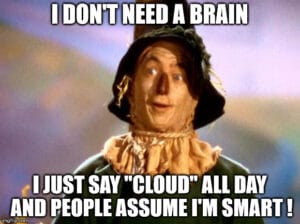
Purna Virji: I like that very much. Use your brain and just make it work for you really, because I think we are using their brain. I have a lot of empathy and understanding and like walking in the shoes of the daily drawers. It’s a lot. So yeah, it’s really not using your brain, use the platforms to benefit you more.
Jon-Mikel Bailey: Amen.
Paid Campaigns on LinkedIn
Jon-Mikel Bailey: So you are the Senior Content Evangelist at LinkedIn. And I want to talk about content more in a second. But first, I want to pick your paid brain some more. We see lots of companies advertising, at least here at Wellspring, we see lots of companies advertising on Facebook or Instagram, or Twitter.
But companies often give us the side-eye, you know, when we talk about LinkedIn ads, so is and I’m kind of preaching to the choir here. But is LinkedIn a viable paid opportunity? You know, what, what might these marketers be missing in terms of LinkedIn as an ad platform?
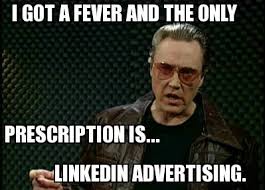
Purna Virji: And I have said this before I started working at LinkedIn. There’s lots of proof of that online as well. But heck, yes, LinkedIn is an incredibly powerful source and platform to reach people, I would say that that’s for a few different reasons. One, our members on LinkedIn, see their time spent on LinkedIn as an investment in themselves. They’re not going on LinkedIn to to kill time or pass the time they’re there.
They want to learn, they want to get better, both personally and professionally. And that’s what they’re going to do. Most of your high quality target audience, they’re going to be there. It’s a very trusted platform, right? You’re putting your brand voice out there. You know, there may not be the style of Instagram but it is the substance that the quality people are really engaging in.
Helpful chatter putting the professional best self forward, their personal best self or where do I you know. Things that are resonating really well tend to be those posts where people are talking about their personal side, whether it’s I got a new job, I got a promotion, or, you know, I am trying struggling with work life balance, or you know, I’m a working mom. And this is, you know, those times where you can be vulnerable and be like human that connection is is immensely powerful.
Jon-Mikel Bailey: Yeah, Amber and I were talking about this, and, for me, spending time on Facebook is kind of like it’s a time suck. And sometimes I feel a little disheartened. And I weep, weep for humanity. But when I spend time on LinkedIn, I actually feel good, I feel empowered. I feel educated. I feel motivated almost.
Purna Virji: I think every platform has its own purpose and its own sort of what you expect from it. So in that sense, well, I think it serves its purpose. It has its life. This is, you know, it’s great in a lot of ways that I stay in touch with friends and family who now I haven’t seen for years now. And it’s brilliant.
And then for my professional life for my, that stuff, LinkedIn is unparalleled. And I’m so glad that you said that you do find value in it because really, that’s the goal. And people work so hard every day to put out really meaningful content that will understand their buyer, they understand the decision journey.
Jon-Mikel Bailey: There’s so much great content on LinkedIn, it’s kind of ridiculous. It’s it’s a little overwhelming, but it’s, I mean, whether it’s original content or paid content, or, you know, links to blogs and things, if you want to, email inboxes graduate, the same thing, but if you want a shortcut to, to great ideas, you know, LinkedIn is definitely a good place to go.
Knowing Your Audience
Jon-Mikel Bailey: So we’re talking, you mentioned at the beginning that you like to find out what makes people tick. So I want to talk a little bit to you about audience. Lots of marketing keynotes and authors talk about the importance of knowing your audience, but I feel like what we end up with is just a few hollow, you know, marketing personas and really little else. So how can a company you know, truly know their audience?
Purna Virji: I’m not a fan of personas, I think it’s all like made-up anyways, to dive into it. And so I have this super low budget, there’s a little budget, and there are higher budget ways. So always start, you can find out a ton with my super low budget approach of brainstorming.
So the first one is you want to set the right foundation, and you really want to understand your audience directly, not the meetup persona that you think they are and what they like and marketing metalline, and you know, whatever people make up. I will start by doing the job. Right? I start by going to the people who talk to the customer all day.
And this is how I’ve told him whether you work in the agency, whether you work in house, there are people who have the voice of your customer. So can you go and talk to the salespeople and the customer service people, right? They’re the ones that are talking to customers all day, they get insider sort of info.
So I always say, “listen, take a handful of these people buy them pizza for an hour, ask them a set of similar questions like why do people choose us? Why did they come to us? Have they gone to any competitor? Before? What’s the most common objection that you get? What do you say that always helps you get the sale? What are some of the big complaints that they have after? Or how long does it take?”
How many questions do they ask how many other people do the research to try to get some of that? So we’re always trying to get that from the people who have the voice of the customer, then I’ll go online and then look at reviews. Reviews are a really great source because it is your customers in their own words, telling you what they like and don’t like.
So start by going through, in-depth, the reviews for yourself, but then also to three of your biggest competitors. Because very often you’ll see, you’ll find what your audience sees as your differentiator as your USP (unique selling proposition). So these are such a good low budget, you could probably do these in a day or two to go and pull all of this data.
And the key is to find the core themes, those core trends. And then if you had the budget and the time and the money, you know, stakeholder approval, if you could speak to some, you know, good customers, if that you had asked them some of these questions as well that out some things you’ll really get a good understanding and Joel Klettke has a really good approach. So he is with Business Casual Copywriting.
And so Joel says he does a BDA (before, during, after) approach, which is he’ll ask people questions about how they like the product or service before they’ve used it, during their engagement with it, and then after they’ve purchased or the product or service and then he says that helps build a very holistic approach. So I really like that.
Jon-Mikel Bailey: I did an interview with, I don’t know if you know Adele Revella from the Buyer Persona Institute, but you know, what a buyer persona actually is versus what most marketers think it is, is so vastly different and I think she would absolutely approve your answer. So yeah, I think it’s critical to know, you know, who the hell you’re talking to, for real and what makes them tick.
Corporate Jargon: The Keyser Söze Bad Content Marketing
Jon-Mikel Bailey: So, we talked about how there’s so much great content on LinkedIn, but there is also a lot of sort of boring corporate-speak. You know, I see it on LinkedIn, I see on company blogs, I see it on other social channels. You know, why, why, why why why do this? Why is this? You know, what would you tell these companies?
You’re the Senior Content Evangelist, what would you tell these companies about making their content matter, especially B2B? They seem to be the usual suspects here, the Keyser Söze of bad content, as it were, it was a usual suspect, reference, in case you didn’t look it up great. Anyway.

Purna Virji: Well, that’s literally why my teammates and I have a job. We work with companies so that they can just turn the dial-up from Good to Great to excellent. And a lot of the reasons that we find come down to two things, that one is just time crunch, time pressures. It’s just “oh, we need you, we have this hungry beast of an editorial calendar to fill” like it’s checking the box approach.
And then you’re never going to get your best thinking, if you’re just like, “I just got to get this thing up.” And that’s there. And then the second reason is people, thinking that just because you work in B2B, that you have to be just very rational and straight-laced and buttoned up. And that LinkedIn has this like very suit and tie network and you cannot really show any human side.
And that’s where you’ll often see that type of content that just lacks soul, it lacks that emotional, nicer theme to connect with people. And of course, there is a time and place and a purpose where you know, just that straight-to-the-point content does work. If we think about our customer journey, it makes a big difference.
Like one in B2B, especially like my colleagues at the B2B Institute, a think tank, but within LinkedIn, did the study. And they found that 95% of people tend to be out of the market, they’re not looking to buy in the near term, but they are your potential audience. Like only about 5% of people in the market to buy now.
And how you talk to them needs to be very different if they’re in the market to buy if they’re ready to convert. So let’s say that you’re upgrading all your computer systems for your company, then you’re really going to need to know like, okay, what are the specs? What’s the pricing, what’s the benefits, why choose, you promised very, that’s what the rational content comes in.
But most companies only lead with that. And that doesn’t do them any favors when your core revenue is your maximum revenue potential is to get ahead of the curve with the 95% who are out of market now. The earlier in their decision journey you can engage them, the more likely they’ll choose you and continue down the path is what the aim is. And for that you need a little bit more emotional appeal content, right?
You will want to talk about your brand, your purpose, your passions, highlights, and the voices of your people. Anything that feels more. With that sort of emotional hook is, I know I keep saying that word, but it’s so important, especially after what we saw with the pandemic where when the lines have blurred between work and home.
B2B started competing with B2C for attention again. So B2C ads always tend to be a lot more emotive and, you know, fun and engaging in that way. So if you’re a B2B ad, now you’re competing not just against other B2B companies, but also the whole B2C. You really need to take a leaf out of B2C book to capture attention, otherwise, it’s gonna be harder, and hold on.
Jon-Mikel Bailey: Yeah, I mean, it almost kind of, to bring it back to paid, it’s almost as if, you know, with their content and efforts, these B2B companies are looking for that shiny new that that silver bullet, like you said, and, and trying to go right for the kill and missing, you know, 95% of the journey. That’s interesting. Do you think…
Purna Virji: Can I add one thing?
Jon-Mikel Bailey: Yes, please, please.
Purna Virji: So I think another reason is also because of how we measure. The great thing about digital marketing and advertising is how easy it is to measure. But that can also hurt us, right? Think about it, even whether it’s paid or whether it is or paid social. We start optimizing when you launch the campaign, you’re gonna start optimizing in the first few weeks.
Most people tend to do that we did that study, but in B2B, or then we asked, so we did this survey at LinkedIn where we asked marketers how many of you measure results in more than, you know, beyond six months? Only 4% of marketers said that they did and 75 plus said that they would optimize in the first two weeks or whatever really optimizing in real-time.
But that does not give you the full picture, right? How long is a B2B sales cycle on average?
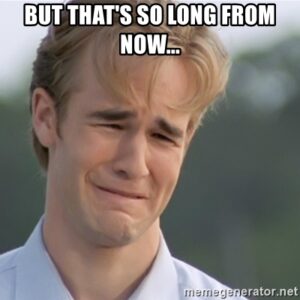
So they tend to be longer and look at the bigger picture. And what the B2B AI research showed was that brand, the upper funnel, like that emotional kind of content, tends to yield a much higher ROI in the longer term, while the sort of demand gen content at the bottom tends to do really well in the short term.
So you want to look at a holistic, broader picture, and you will need to balance both. No one’s saying you one or the other. But far too often people get stuck with the demand gen side only because it’s so easy to measure and track. But then they’re only filling short term.
A longer-term brand tends to have the benefits of you know, you can turn your HR, you can hire, you can attract better talent, you can have a higher price point, right? You built value on the understanding of your brand. So yeah, sorry, that was like my other reason.
Jon-Mikel Bailey: Oh, that’s great. And it’s like what we were talking about before, you know, before we started this recording, all this is, is that you’ve seen my name a lot, and I’ve seen your name a lot. And we both feel like we know each other. We’ve never met and that’s personal branding and B2B companies really need to do the same thing. You know, people buy from who they know. And if they all they know you as a company that’s trying to sell to them. Ain’t gonna fly.
Purna Virji: 100%. And you also want to be thought of in the moments that matter, right? If you think about Geico, Geico, they’ve put the ads, it’s everywhere. So now if I’m thinking about buying car insurance, it’s just natural that the gecko because of the Geico, GEICO is gonna pop into my mind.
Or we talked to Coca-Cola before. If you’re buying a happy meal, like how easily is Coca Cola going to come in mind, like, oh, I should get the coke as well. So that’s really brand salience. And so that’s when you’re thought of at the time of buying moments. So of course, these are the brands that tend to make the most money because you’re caught up at the right time.
Jon-Mikel Bailey: Well, I think that’s a great place to end it. There’s so much good stuff in here. And I I hope that people watch this and have a couple of sort of lightbulb moments and and start really focusing on what they’re doing, because that’s really the theme of what we’ve talked about here is to pay attention to the big picture and the long term. So it’s been great. And someday we’ll have to hang out for real in person. And yeah, thank you.
Purna Virji: Thank you. This was so fun. The time flew by I’m like what we’re done already. Thank you, Jon. Such a pleasure.
Jon-Mikel Bailey: Bye everybody.
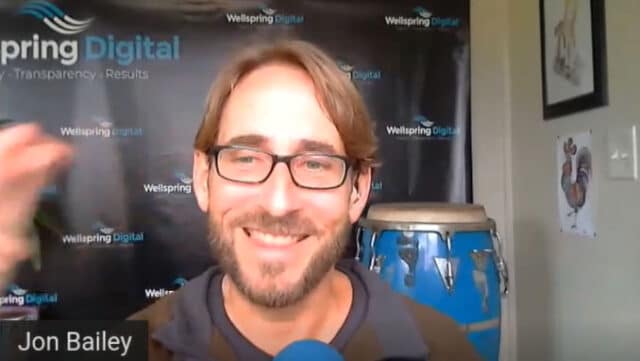
Jon-Mikel Bailey: Like that